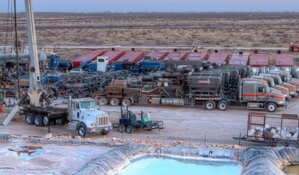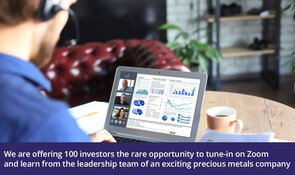Yves Siegel: I think it's pretty simple. Firstly, MLPs are viewed as good defensive investments in times of uncertainty. Secondly, MLPs provide investors with an attractive, partially tax-deferred yield. Right now, the average MLP yield is around 6.5%. Thirdly, with distributions there's the potential income growth that could average 3% –6%. The yield plus distribution growth still provides a pretty good investment value proposition. I don't think there are many other places where investors can put their dollars and get a nice return with very moderate risk.
TER: Is this an unprecedented time in terms of money pouring into MLPs?
YS: I'm not sure it's unprecedented. Back in 2007, you had a lot of inflow of capital. The difference is the money attracted to the MLP space back in 2007 was what I could call "fast money." It was more hedge fund–based than the more traditional retail investor. They were attracted to the unprecedented growth in MLP distributions. Those investors tended to have a much shorter time horizon. I think they correctly viewed MLPs as a good place to invest, but perhaps too much of a good thing is no longer a good thing.
TER: You mentioned the tax-deferred status of MLP distributions. Is Credit Suisse concerned that the combination of the U.S. federal cash crunch and the success of MLPs in this bear market could lead to further taxes?
YS: There's always a risk that someone in government will take a harder view of the MLPs. We don't see that on the near-term horizon. We would say that the MLPs are building a lot of the necessary energy infrastructure in the United States and that this is creating a lot of jobs. MLPs provide a really valuable service, and I don't think it makes a whole lot of sense to change the tax status.
TER: Kinder Morgan Energy Partners L.P. (NYSE:KMP) did a $75-million equity financing in June and Energy Transfer Partners L.P. (NYSE:ETP) raised about $437 million in a recent financing. In total, MLPs have raised $7.2 billion in equity financings so far this year. Is this normal, or is this amount of dilution cause for alarm?
YS: I'd be careful using the term "dilution." The MLP business model is such that nearly all of the cash flow—after maintenance capital—is distributed to the unit holders. In most conventional businesses, you retain a portion of your cash flow to reinvest in the business. MLPs generally do not do that because of the structure. That raises the question: How do you grow if you're distributing all your cash? The answer: You have to rely on external capital, both equity and debt. As I said earlier, MLPs are financing the infrastructure growth in the U.S. They're building the pipelines, storage assets and processing assets necessary to get the new energy supplies to market. The way they finance that growth is by issuing equity and issuing debt. It's really important to recognize that the MLP structure is very transparent. Just follow the cash. If MLPs were not able to invest that cash productively (i.e., have a return in excess of their cost of capital), they wouldn't be able to continue accessing external capital. That transparency is a plus. The mindset is: I have to be a good steward of capital from investors; otherwise I'm not going to be able to go back and ask them for more money. That rationale is incredibly important. As long as MLPs have good investment opportunities, you'll see relatively high financing requirements and a lot of equity and debt being raised.
TER: Is the $7.2 billion invested so far this year a lot higher than that over the same period last year?
YS: The pace of equity offerings has quickened this year relative to 2008 and 2009 when $6.4 billion and $6.8 billion was raised respectively in each year. This is due in part to the deferral of offerings in those years due to difficult market conditions.
TER: So, this isn't abnormal?
YS: No, it's not.
TER: You have an outperform rating on Energy Transfer Partners. Why do you have an outperform rating on them, and what does ETP plan to do with that capital?
YS: Energy Transfer is one of the companies that we can point to as building out the U.S. infrastructure. Specifically, Energy Transfer is involved in two ongoing multibillion-dollar projects to take shale play gas to market. They're building a Fayetteville pipeline that services the Fayetteville Shale and they have the Tiger Pipeline to access the Haynesville Shale.
We at Credit Suisse embrace the notion that there will be many investment opportunities around developing the shale plays in the U.S. We like Energy Transfer because we see them being able to grow the company via building these pipelines and benefit from the incremental cash flow that the pipelines will generate. We also think the management team is very good and has a very good track record of building shareholder value. Lastly, the MLP has a very nice yield—just north of 7%.
TER: Which MLPs stand to benefit most from their shale-play investments?
YS: Well, you have Boardwalk Pipeline Partners, L.P. (NYSE:BWP). They've spent some $5 billion on long-haul interstate pipelines accessing some shale plays, such as the Fayetteville and Barnett Shales. They also have some exposure to Haynesville. Energy Transfer has a couple of pipeline projects. Enterprise Products Partners, L.P. (NYSE:EPD) has multibillion-dollar investments surrounding the Eagle Ford Shale, which is a new play folks like because not only does it have a lot of natural gas, it also has a lot of associated natural gas liquids (NGLs). EPD is very well poised to benefit from that play.
The "Big Kahuna," Kinder Morgan, also has exposure to various shale plays, including the Haynesville play via their KinderHawk joint venture in Louisiana. They also have large pipeline assets in Texas that give them exposure to the Barnett Shale, and they're a partner with Energy Transfer on the Fayetteville Express Pipeline. They've also teamed up with a small MLP called Copano Energy, L.L.C. (NASDAQ:CPNO) to access the Eagle Ford Shale. Those are just a few of the MLPs that have nice exposure to the shale plays.
TER: A lot of these MLPs are quite large. Is it more encouraging that the "Big Kahuna" is making investments in the shale plays?
YS: Just from the vantage point that Rich Kinder is one of the smartest guys around. Typically, they do an excellent job of trying to identify trends and investing in those trends. Kinder Morgan being there confirms that these shale plays are real, and I think are very viable for the long term. You can make the same case for Enterprise. I mean those guys are extraordinarily bright, as is Energy Transfer's management.
TER: You mentioned that one of the things making these shale plays viable is the NGLs, which require little processing. But, in your research, you also say that the NGL prices will be somewhat lower for the next while.
YS: You have to be careful because not all shale plays are alike. Some have more NGL content than others. I think it's sort of good news and bad news. The good news is that there's a lot of natural gas around. The bad news is that, from a pricing perspective, it's still supply and demand. If there's a lot of supply and not that much demand, it does put some pressure on prices.
As we come out of this recession, we're still building demand. Consequently, natural gas prices are somewhat depressed. We know that crude oil prices are fairly attractive in the $75–$80 range. When natural gas is produced, typically it comes out of the ground wet and has to be processed. The more NGLs produced as a byproduct, the more value that accrues to the producer.
TER: A premium.
YS: Yes. NGL prices tend to track crude because they compete with crude in the petrochemical market. In an environment where natural gas prices are depressed and crude oil prices are strong, NGLs add a really nice premium. Consequently, producers are going to drill in areas that have the liquids-rich natural gas. That's what we're seeing, and that's why the Eagle Ford is such an attractive proposition for producers today.
TER: Which MLPs have a fair amount of exposure to the NGLs?
YS: About a third of Enterprise Products Partners' business is exposed to the natural gas liquids. They just reported on their second quarter earlier this week. That business was very, very strong. In our universe, that's the one company that has the most exposure. There are other companies we don't follow that also have some exposure. ONEOK Partners, L.P. (NYSE:OKS) is similar to Enterprise in that they have an integrated value chain on the NGL side. There's a host of smaller MLPs that primarily do natural gas processing. Those would include companies like DCP Midstream Partners, L.P. (NYSE:DPM), MarkWest Energy Partners, L.P. (NYSE.A:MWE) and Targa Resources Partners, L.P. (NYSE:NGLS). I would classify those companies as more "pure-play" NGL companies.
TER: Going back to your Credit Suisse MLP market overview. It said: "stock market volatility can present better buying opportunities. However, we are not market timers. We continue to add Boardwalk Pipeline Partners, Enterprise Product Partners and Plains All American Pipeline, L.P. (NYSE:PAA)." You discussed the first two earlier. Tell us why you like Plains.
YS: What's so glamorous about Plains All American? They're focused on the movement of crude oil through pipelines, and they also have large storage operations. They recently did an IPO of their natural gas-storage business—PAA Natural Gas Storage, L.P. (NYSE:PNG). I'm not enamored necessarily with the crude logistics business, but I am enamored with really strong management teams that have consistently delivered year in and year out and have a track record of providing shareholder value. Plains All American is what I'd like to characterize as my "Rip Van Winkle stock." I feel I could put my money in Plains and sort of sleep for a while, then wake up to find my investment has grown nicely and feel pretty good about it. That's the Plains All American story—really exceptional managers, great stewards of capital and just a very, very nice track record.
TER: Can you talk about Boardwalk's and Enterprise's management teams?
YS: Boardwalk has very strong pipeline management. They know what they are doing. They benefit from the assistance of Loews Corp. (NYSE:L), a holding company run by the Tisch family that owns the general partnership (GP), and that has been successful guiding the partnership. Boardwalk also has a very capable natural gas pipeline management team that calibrates risk very well.
Then you have Enterprise Products Partners, which was started by Dan Duncan, an impressive visionary in the industry. EPD is a little more of a risk taker than perhaps Boardwalk. By risk taker, I mean a bit more entrepreneurial. Duncan's built the largest MLP that has favorable investment characteristics due to its very large footprint; they are well diversified in different businesses. They have the natural gas liquids business, wherein they are the premier NGL publicly traded company. Then they have natural gas pipelines, refined petroleum products pipelines and crude pipelines. And they are very conservatively financed. It's almost unprecedented to see an MLP that has a 1.2, 1.3 coverage ratio—especially being as large as Enterprise. This is one I'd strongly consider as a core holding among the MLPs.
TER: That's quite the endorsement. Spectra Energy Partners, L.P. (NYSE:SEP), Magellan Midstream Partners, L.P. (NYSE:MMP) and Duncan Energy Partners, L.P. (NYSE:DEP) are all at the bottom of your capital-cost table. Does this position these MLPs for growth? Or does cheap money often lead to bad decisions?
YS: I would agree that cheap money often leads to bad decisions. We've just beared witness to some really bad decisions because of cheap money. As it relates to MLPs (and what I tried to articulate before) is, if MLPs cannot deliver returns in excess of their capital cost, they're going to be in trouble. Some MLPs have made bad investment decisions, and they have had to face the consequences.
As it relates to the three companies just mentioned, Duncan Energy is basically an affiliate of Enterprise Products Partners. Consequently, Duncan has the same sort of financial discipline as Enterprise. Magellan Midstream? I don't mean this in a disparaging way but, when I think of Magellan, I usually think of a company that has been very conservatively managed. But they are also prudent stewards of capital. Lastly, Spectra has demonstrated that they, too, are very prudent when it comes to investing capital.
First and foremost, we take our view of management very seriously. If we don't have a strong conviction that the management team is extremely capable, it's hard for us to have a favorable view of that company. Needless to say, we feel pretty good that the management teams of the companies we've discussed understand risk and finance; and, just as importantly, they understand their businesses.
TER: Among the energy MLPs, you have outperform ratings on Niska Gas Storage Partners, L.L.C. (NYSE: NKA), Kinder Morgan Management, L.L.C. (NYSE:KMR) and Energy Transfer Partners. But you also have an outperform rating on ETP's general partner, Energy Transfer Equity, L.P. (NYSE:ETE). Tell us about Niska, Kinder Morgan Management and ETE.
YS: Energy Transfer Equity benefits disproportionately when Energy Transfer Partners raises the distribution or issues equity to finance their growth. The general partners own something called "incentive distribution rights." The incentive distribution rights reward the GP for hitting distribution targets. Consequently, the GP can grow twice as fast as the underlying MLP. Historically, most GPs have grown faster because of those incentive distribution rights. If one is positive on the underlying MLP, it's not unreasonable to think you may also be positive on the general partner.
TER: Are you saying we're about to see substantial growth in ETE's distributions?
YS: We think ETE is positioned for a compounded annual distribution growth rate of 8.6% over the next three years. ETE owns the general partner and limited partnership units in both Energy Transfer Partners and Regency Energy Partners, L.P. (NASDAQ:RGNC). As such, ETE stands to benefit from the growth of these two MLPs.
TER: And Kinder Morgan Management?
YS: Think about Kinder Morgan as two classes of securities. One is Kinder Morgan Energy Partners (KMP), which pays their distribution in cash. The other is Kinder Morgan Management (KMR), which pays their distribution in stock. That's the major difference between KMP and KMR. The other difference is that Kinder Morgan Management is structured such that investors receive a 1099 instead of a K1. That means you can buy KMR and put it in your IRA account, and institutional investors can buy KMR because it's not generating any unrelated business-taxable income.
TER: That's why it exists.
YS: It helps with financing, too. It's an attractive alternative for institutional investors that are sensitive to investing in MLPs. In addition, it helps finance Kinder Morgan's growth because, if you buy KMR, it's almost like an automatic dividend reinvestment plan. But for whatever reason, KMR trades at a 10%–13% discount to KMP. We think KMP may be fairly valued and thus we have a neutral rating on it, whereas we think KMR is attractively valued because we see no rational reason for it to trade at such a large discount to KMP. The only real difference between KMR and KMP is that KMR pays their distribution in stock rather than cash.
TER: And Niska?
YS: Niska just did their IPO in May, and Credit Suisse participated in that offering. Niska quite simply is a play on the need for natural-gas storage both in Canada and the U.S. We like Niska because they have plans to expand storage in Canada and California and a very clean balance sheet. In essence, they have pre-financed that growth via their equity offering. We also think that other storage assets owned by private equity may very well be for sale. Niska is likely to participate in those acquisitions, and that should help them grow above and beyond the organic growth already on their drawing board. Finally, we think the management team there is very astute. They have years of experience developing and operating storage. For folks looking to participate in growing natural-gas production and the need for natural-gas storage, Niska's very capable management makes the company an interesting way to play that.
TER: Do you have any thoughts you would like to leave us with?
YS: You read that quote from our research that said: "Stock market volatility can present better buying opportunities; however, we are not market timers and will continue to add to positions." I purposely said that because I think readers should differentiate between investing and trading. I view investing in MLPs as a multiyear commitment. The underlying rationale for investing in MLPs is that you're investing in a cash-flow stream that you think is secure, stable and predictable, which may very well grow. If that's the case, one shouldn't be overly concerned about market volatility. Just stay focused on that cash-flow stream and don't obsess over the day-to-day swings in the stock price. Too many investors do that. My message is to invest in strong companies with good cash flow and visible growth.
I'm also very cognizant of the fact that MLPs have had a really strong run in 2010. They may be due for a pullback, especially if capital markets freeze up. Conversely, if the stock market takes off, then you could see folks pulling out of MLPs to invest in the next herd mentality scheme.
Yves Siegel joined the Credit Suisse Energy Research Team in June 2009 to cover the Master Limited Partnership (MLP) and Natural Gas Pipeline sectors. Immediately prior to joining Credit Suisse, Yves was a senior portfolio manager at a New York hedge fund focused on MLPs. Prior to his buy-side experience, Yves had established a leading sell-side MLP franchise, having spent over 10 years at Wachovia Securities after prior sell-side engagements at Smith Barney and Lehman Brothers. Yves has received both a BA and MBA from New York University and is a CFA charter holder.
Want to read more exclusive Energy Report interviews like this? Sign up for our free e-newsletter, and you'll learn when new articles have been published. To see a list of recent interviews with industry analysts and commentators, visit our Expert Insights page.
DISCLOSURE:
1) Brian Sylvester of The Energy Report conducted this interview. He personally and/or his family own the following companies mentioned in this interview: None.
2) The following companies mentioned in the interview are sponsors of The Gold Report or The Energy Report: Energy Transfer Partners L.P.
3) Yves Siegel: I personally and/or my family own the following companies mentioned in this interview: Kinder Morgan Energy Partners, Enterprise Products Partners. I personally and/or my family am paid by the following companies mentioned in this interview: None.
CREDIT SUISSE SECURITIES (USA) LLC: NSH NKA DEP EPE SEP KMP KMR ETE EPD WES SXL ETP NS BWP
Visit The Energy Report’s MLP Insights to learn more.










































